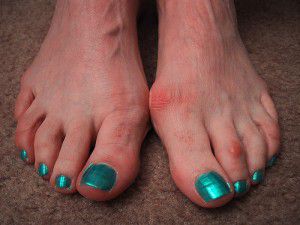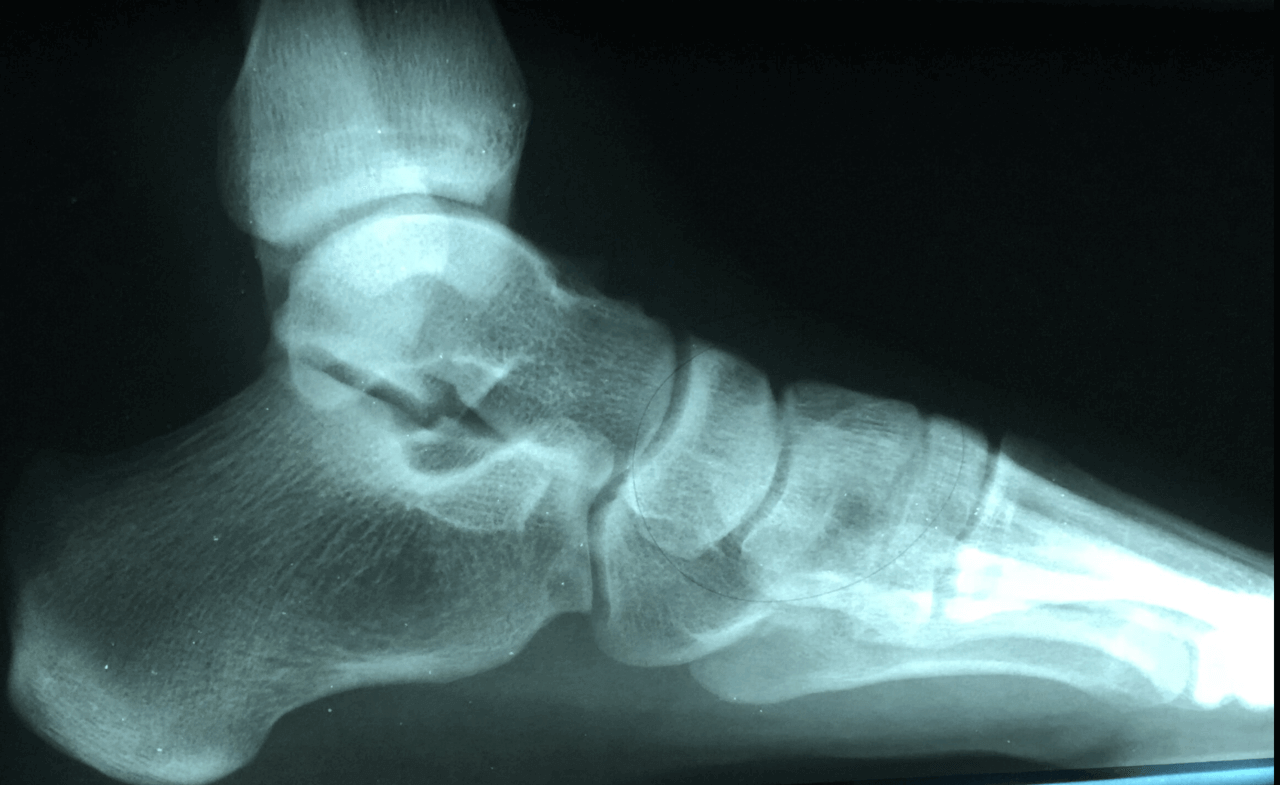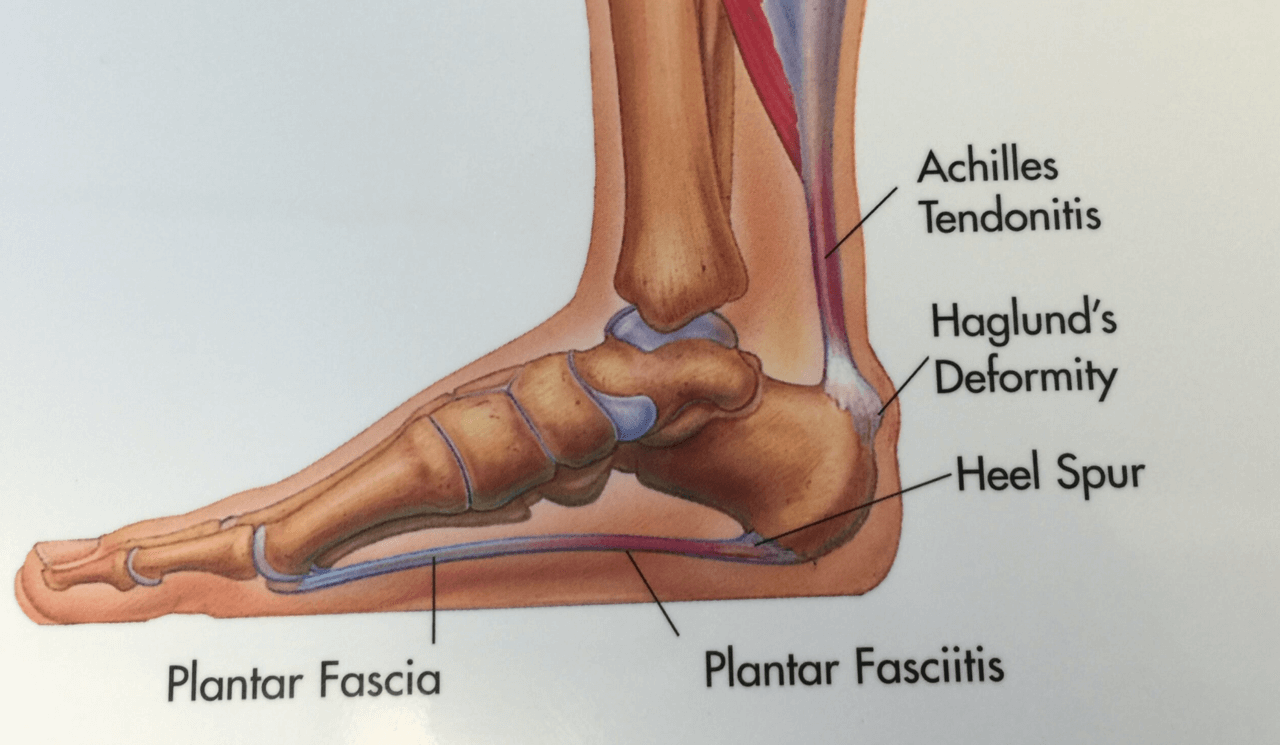bfdadmin
bfdadmin
Dr Timothy Young, a Board Certified Foot Surgeon Talks About Special Achilles Exercise Therapy
This is an extremely effective treatment for Achilles tendon problems. It's also very helpful for strengthening the calf muscle, and for improving balance. The premise of this is that you calf muscle is "firing" as it's getting longer - this is synonymous with deceleration as opposed to a normal muscle contracture where the muscle is getting shorter which is considered acceleration.
Key points:
-Use your upper body strength to raise your heal and then use your calf muscle to lower slowly. The best way to do this is with your hands supported on a high countertop and your feet on the floor with a raised forefoot
· Mild discomfort is okay.
· It is important to build up with this exercise and not do too much too soon.
· Some individuals add additional weight using a backpack
· Lower your heel slowly and it should be lower relative to your forefoot. Therefore some people would use a 1 inch block/book under the ball of the foot
· Start off with both feet simultaneously then add each foot individually.
The traditional Repetitions:
3 x 15 straight knee, then 3 x 15 with bent knee.
Frequency: Twice daily for 12 weeks
The toned down version:
Initially doing a set of 30 using both right and left simultaneously
After several weeks doing more:
An additional set of 30 on the right side
An additional set of 30 on the left side
Example below would be even better if the hands were on a high countertop

If you are experiencing foot or ankle pain, give us a call at 425-391-8666 or make an appointment online today.
Dr. Brandon Nelson, Board-Certified Physician and Surgeon, Discusses #1 Bunion Currently in the United States.

Bunion surgery continues to be the most common foot surgery United States. Tens of thousands are performed annually. The vast majority of these are performed in an outpatient setting less than a couple hours. A large percentage of these patients can begin weightbearing shortly after the procedure.
Currently there is a lot of literature around the Lapiplasty which is the device to help improve bunion correction. The idea behind the device is a 3 plane correction of the bunion this been utilized for over 6 years and on over 35,000 patients. Lateral last he device helps to correct, cut, compress and fixate the bunion procedure.
First component of the laminoplasty is correct. The device is utilized to correct the bunion in all 3 cardinal planes by allowing and alignment correction or making any cuts in the bone. A second component for contact performed via sisal J which allows an average cut between 2.4 and 3.1 mm average shortening. Third component or compresses utilized to achieve compression of the joint while maintaining the 3-D correction. The fourth and final fixate is plate system that has been biomechanically tested for multiple complaints stability and rapid return to weightbearing.
I have had experience using the lapiplasty system. The Lapidus bunionectomy remains one of my most commonly performed surgical procedures. It has great power of correction for large bunion deformities and patients with significant instability. If you currently are experiencing bunion pain and are interested in the laminoplasty I am happy to help.
Sincerely,
Board-certified American College of Foot and Ankle Surgeons
Board-certified American College of Podiatric Medicine
Dr. Brandon Nelson, Board-Certified Foot and Ankle Physician and Surgeon, Discusses Heel pain and Plantar Fasciitis

There are quite a few causes of heel pain of heel pain and it can vary by age. We tend to break it up by pediatric meaning anybody less than 18 and adult heel pain anybody over 18. Regardless of the age and the patient heel pain can be extremely challenging and very painful. We see quite a few adults and children that are highly athletic and struggling with resolving their heel pain.
Heel pain and children is typically sourced to a disorder called calcaneal apophysitis. This is a condition where the growth plate of the heel is affected. Often times with young man this occurs between the ages of 14 and 16 and for young limited between the ages of 12 and 14. We see a high correlation with sport activities especially cleated sports. It is important to have an x-ray and follow-up with the foot and ankle physician in order to evaluate the other underlying causes.
Adults tend to have pain that occurs in the morning especially when getting out of bed or after activities. We see the majority of people have often increased their exercise routine or started a new activity. The #1 cause of heel pain and adults remains plantar fasciitis. The plantar fascia is the main supporting network of the foot and can become tired and worn out with age. Again it is important to seek help from a foot and ankle physician to determine whether or not this is the underlying cause.
Heel pain in both pediatrics and adults is highly treatable and early intervention is better. The majority of these causes can be distinguished of the first visit and felt can be implemented immediately. If you’re having heel pain please make an appointment today and I can help.
Sincerely Dr. Brandon Nelson
Board-Certified Foot and Ankle Physician and SurgeonDr. Timothy Young, a Board Certified Foot Surgeon, Discusses How Doctors Diagnose Resistant Plantar Fasciitis

One of the essential tools for evaluation of heel pain is ultrasound high definition imaging. With this diagnostic tool, we can see if the planter fascia is excessively thickened and to what extent. For example typical thickness would be 3- 4 mm. But in severe cases it can be 7 mm or even up to 11 mm thick. This can be especially helpful when comparing to baseline or the non-symptomatic side.
In some cases there has been plantar fasciitis in the past on the non-symptomatic side or some individuals have plantar fasciitis affect on the both the right and left foot which does make baseline comparison a challenge. So when we see a severe case of plantar fasciitis with severe thickening of the fascia then we know it will be even more resistant than typical. That means that we have to consider some some of the treatment options for resisting cases such as shockwave therapy or PRP. We still have to do all of the other traditional treatments for plantar fasciitis.
Give us a call at 425-391-8666 or make an appointment online today.
Dr. Brandon Nelson, Board-Certified Foot and Ankle Physician and Surgeon, Discusses Bunion Surgery

Bunion pain is a common presentation at my clinic. We see a large percentage of bunion patients wanting consultations for surgery. Bunion surgery is highly successful and moderate techniques provide decrease healing times and decreased postoperative pain. It is important to understand that there are many different types of bunion surgery that can be performed. The primary indicator for bunion surgery selection is the overall foot structure and the size of the bunion.
Over the years I have seen many different types of bunion surgery come in and out of favor. It is important to realize there are a few procedures that have been around for years and continue to be the work courses of bunion surgery. The most common bunion surgery performed in the United States is was called a head procedure or an Austin type bunionectomy.
The Austin bunionectomy involves repairing of the small some medium size bunion. It consists of cutting the first metatarsal head in a Chevron type fashion and then moving the head in a lateral position towards the fifth metatarsal. Additionally some bone is typically shaved off the medial aspect or the inside of the first metatarsal head and some soft tissue is released laterally. This is a great procedure provides wonderful correction in the majority of patients are able to fully walk after this procedure.
If you have bunion pain and are interested in having a surgical consultation please make an appointment today or give us a call at 425-391-8666 and I’ll happily help get it fixed.
Sincerely,
Board-certified American College of Foot and Ankle Surgeons
Board-certified American Board of Podiatric Medicine
Dr. Brandon Nelson, Board-Certified Foot and Ankle Surgeon, Discusses Treatment Options for Plantar Fasciitis

Plantar fasciitis and other causes of heel pain including Sever’s disease, apophysitis, calcaneal stress fractures and bursitis can sometimes be difficult to differentiate between. It is important to have a thorough workup including x-rays and sometimes even an MRI by a physician that specializes in heel pain. Heel pain and the treatment of heel pain have been a passion of mine for over 15 years. I am constantly reviewing Journal articles in the latest research for heel pain to improve my care for my patients can speed recovery.
The most common cause of heel pain continues to be plantar fasciitis. Most people will experience pain in the morning or after prolonged periods of rest. In addition often times patients will have pain at the end of the day sometimes a burning tingling type sensation. There are often is a correlation with increased activities or change in shoe gear.
Plantar fasciitis or heel pain is by far the most common treated pathology that I encountered. Once an accurate diagnosis is made the conservative success rate is almost 90%. The treatment needs to be patients specific. There is important to address the overall foot structure and mechanics of the patient. I highly recommend seeing a foot and ankle physician experiencing heel pain and making sure to have a thorough workup including appropriate blood work x-rays and even advanced imaging is needed.
If you currently experiencing heel pain I can help. Please give me a call 425-391-8666
Sincerely,
Board-certified American College of Foot and Ankle Surgeons
Board-certified American College of Podiatric Medicine
What Does Shockwave/EPAT Do?

What does shockwave/EPAT do?
We use shockwave for various conditions. For example, with plantar fasciitis the plantar fascia does not have great blood supply. So, with plantar fasciitis, shockwave is extremely effective. The body thinks it is being traumatized and this in turn stimulates additional blood flow to help the plantar fasciitis resolve. The shockwave treatment also stimulates the release of local healing factors that your body has available but aren't normally released or readily available . For example, these healing factors would be released during an injury. So again, this shockwave treatment simulates an injury but it's not creating any real trauma (just fooling the body) .
Over time, shockwave helps allow for long-term healing of the tissues, rather than just masking the problem.
If you are experiencing heel pain, give us a call at 425-391-8666 or make an appointment online today.
Dr. Brandon Nelson a Board Certified Physician & Surgeon Discusses How Heel Pain Can Be Fixed Permanently

The most common cause of heel pain continues to be plantar fasciitis in adults and apophysitis (or Sever’s Disease) in children. With adults it seems to be correlated with an increase in exercise or activities and with children it is common with growth spurts. The two conditions often have similar presentations and can be treated with similar protocols. I recommend having any pain evaluated by a physician as other pathologies can cause heel pain.
They are many different treatment options for heel pain, especially plantar fasciitis. I have now observed different conservative and surgical techniques come in and out of favor. It is important to first get the correct diagnosis and then see what factors are contributing to the pain before implementing treatment. It can be helpful to have and x-ray, an ultrasound or even an MRI before tackling heel pain.
In recent years I have began to approach plantar fasciitis from both a mechanical and biological perspective. I believe foot structure and training can play a large part in the development of heel pain. I also believe once this heel pain starts it often can become chronic and this chronicity is what allows the pain to spiral out of control. Since implementing a protocol that addresses both of these aspects I have seen a huge swing in long term effectiveness. If you are suffering from heel pain for months or even years I can help you fix this once and for all. I know how painful, frustrating and exhausting it can be.
Board Certified Physician and Surgeon
Dr Brandon Nelson, a Board-Certified Physician and Surgeon, Discusses What His Patients Experience After Bunion Surgery

I have now been operating for about 15 years and can tell you bunion surgery has really changed. In the average week I correct 3-5 bunions and have now operated on 1000’s of bunions. Some bunions are small, and some are large and very complex, but all can be fixed. I continue to learn and research new techniques, and these have afforded me opportunities and skills to provide great outcomes and minimal down time.
In the past bunion surgery was done at the hospital and often required and overnight stay. Patients were placed in casts and often non-weight bearing for months. I have heard stories of patients being uncomfortable for weeks.
I can tell you techniques have changed, and I am happy to outline how the average patient experience goes at my clinic. My clinic has an onsite surgery center that provides a huge cost and time savings as compared to a free-standing surgery center or a hospital. Most bunion cases are completed in under 3 hours from the time one enters the clinic to when ones leaves. We utilize IV sedation which is safer and allows me to perform a nerve block for long term pain relief. Pain medication is only needed for a few days and many patients do not even take anything apart from an NSAID. Weight bearing status depends on any ancillary procedures, but most bunion patients can walk immediately after surgery.
If you have bunion and have been contemplating having it fixed make an appointment today and I will review your options and help you make an informed decision.
Sincerely,
Dr Brandon Nelson, A Board-Certified Physician and Surgeon, Discusses Options to Treat Neuromas

Neuromas of the foot are common in woman between the ages of 40-60. The typical neuroma will present with pain, burning and tingling to the forefoot. Most people state the pain feels better without shoes and rubbing one’s foot can help. There does not need to be a history or trauma or even previous foot pain to have a neuroma.
The neuroma itself is usually located in the 3rd interspace of the foot. This is between the 3rd and 4th toe and can be either right or left foot and rarely both feet. The reason this is the most common spot is the fact two nerves come together in this location. Often this creates an entrapment as this location can have limited space.
Treatment options for neuromas range from stretching and icing to injections and orthotics. Rarely now is surgery required as the conservative measures are so successful. I typically employ a prescription orthotic in conjunction with a series of alcohol injections. I have developed a protocol over years of treating thousand of patients and this has proved so successful that I rarely find surgery needed. I even see quite a few patients that have seen multiple other providers. If you want to avoid surgery and have a neuroma I can help. I look forward to getting you back on the road to recovery, Dr. Brandon Nelson, Board Certified Physician and Surgeon.
Give us a call at 425-391-8666 or make an appointment online today.



